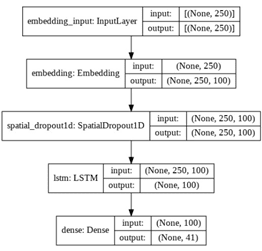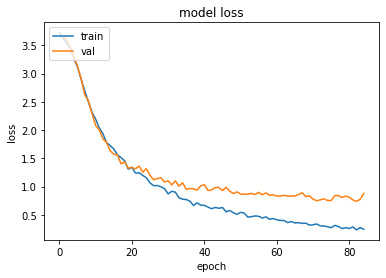An Interest In:
Web News this Week
- March 19, 2024
- March 18, 2024
- March 17, 2024
- March 16, 2024
- March 15, 2024
- March 14, 2024
- March 13, 2024
Disease Prediction Based On Medical Diagnosis
In this article, we will discuss one of DOCTOR-Y's Machine Learning Models. This model predicts the current patients' medical conditions based on the previous diagnoses from the patient's medical history.
We used a dataset containing the diseases and their diagnosis and classified it using 3 different machine learning classifiers.
If you don't know what is DOCTOR-Y check this post (link will be available soon).
Idea
Physicians will spend a lot of time reviewing the patient's previous e-prescriptions provided on DOCTOR-Y to know their past medical conditions and previous diseases.
That's why DOCTOR-Y provides a summarized chart representing the percentages for suffering from a group of diseases based on previous diagnoses. The model is provided with a dataset to train and classify these diseases. The model takes the diagnoses as input from previous prescriptions, and the output will be the predicted disease based on these diagnoses.
The snippet below shows how the model works.
python NLP.py "The patient has high blood pressure"->['Hypertension']Dataset
In this model, most of the data were collected from Disease Symptom Prediction Dataset from Kaggle.
Our dataset is used for the disease diagnosis model based on previous diagnoses, and it is divided into two columns the disease name, and diagnoses for that disease. We have 773 rows with 41 unique diseases leaving us with approximately 19 entries for each disease.
The dataset is balanced. However, we faced a problem regarding building it from scratch. This data may lead to misclassification for diseases based on different diagnoses, which will affect the models accuracy.
The majority of the data is collected by hand from multiple healthcare sites; we looked carefully for definitions and diagnoses for the required diseases and ensured that no entries were duplicated.
| Prognosis | Prognosis | Prognosis | Prognosis |
|---|---|---|---|
| Fungal infection | Migraine | hepatitis A | Heart attack |
| Allergy | Cervical spondylosis | Hepatitis B | Varicose veins |
| GERD | Paralysis(brain hemorrhage) | Hepatitis C | Hypothyroidism |
| Chronic cholestasis | Jaundice | Hepatitis D | Hyperthyroidism |
| Drug Reaction | Malaria | Hepatitis E | Hypoglycemia |
| Peptic ulcer diseae | Chicken pox | Alcoholic hepatitis | Osteoarthristis |
| AIDS | Dengue | Tuberculosis | Arthritis |
| Diabetes | Typhoid | Common Cold | (vertigo) Paroymsal Positional Vertigo |
| Gastroenteritis | Psoriasis | Pneumonia | Acne |
| Bronchial Asthma | Impetigo | Dimorphic hemmorhoids(piles) | Urinary tract infection |
| Hypertension |
Implementation
Data Preparation
We prepared the data to be cleaner to obtain better results, and we implemented the following preprocessors:
- Stop Words Removal is used to remove stop words like (the, them, etc.).
- Lowercasing is used to convert all words in subject and body to lowercase.
- Punctuation Removal is used to remove all the punctuations like ('[/(){}[]|@,;]') and replace them with spaces."
Model Definition
- The Model is trained on the discussed dataset.
- The Model input: the diagnosis.
- The Model output: the possible diseases the patient may suffer from.
Model Training
We used three classification algorithms to process this data which are :
- SVM (Support Vector Machine)
- NLP LSTM (Long Short Term Memory for Natural Language Processing) Our model will have one input layer, one embedding layer, one LSTM layer with 100 neurons and one output layer with 41 neurons since we have 41 labels in the output batch size of 64 and 80 epochs.

- Multinomial Nave Bayes
Evaluation & Results
- The Dataset in NLP(LSTM) model was split by 90/10, and in SVM and Nave Bayes was 80/20.
- The accuracy of each classification technique used for predicting diseases based on diagnoses:
| Algorithm | Accuracy |
|---|---|
| SVM | 81% |
| NLP (LSTM) | 69.20% |
| NAVE BAYES | 74% |
The accuracy of the NLP model in training nearly reached 90% accuracy in training and 69.2% accuracy in the validation phase.
Discussion
The least performing model was the LSTM model, while the best performing model was the SVM and Naiive model
NLP Model
Unfortunately, papers did not provide guidelines on configuring the network of this model. So we had to use trial and error to choose the hyperparameters.
The results of the LSTM model are worse than both the SVM and Nave models by achieving 69% accuracy; because the LSTM model reads the data sequentially and it has a memory that helps to keep words and use them in the prediction process, so it is more reliable than both.
Integration With DOCTOR-Y
We used the Diseases Diagnoses Prediction Model's results and combined them with the Diseases Symptoms Prediction Model's results to calculate the percentage of suffering from a group of diseases based on previous diagnoses + the associated symptoms.
The final diseases and their percentages are sent to the system server, which sends them to the client-side to be represented on a chart as shown in the figure below.
Original Link: https://dev.to/ahmedsamy/disease-prediction-based-on-medical-diagnosis-547o
Dev To
 An online community for sharing and discovering great ideas, having debates, and making friends
An online community for sharing and discovering great ideas, having debates, and making friendsMore About this Source Visit Dev To




